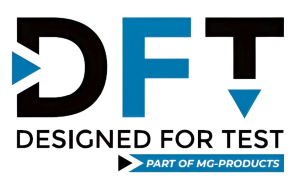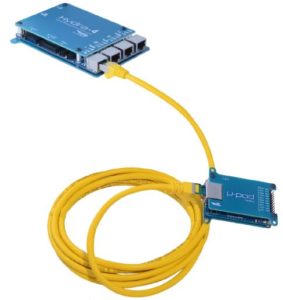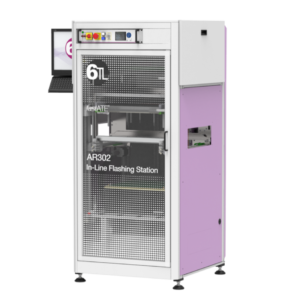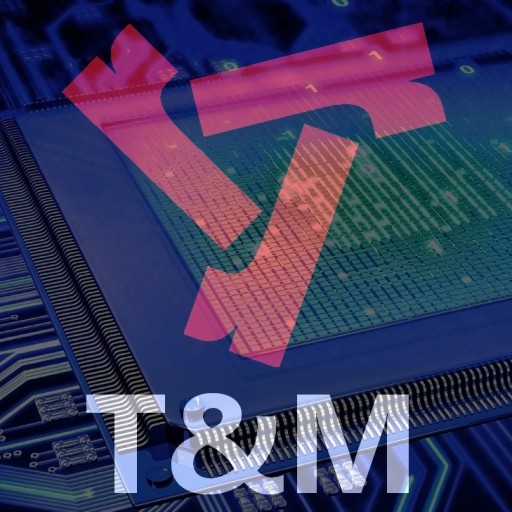What is ISP (In-System Programming)
In-system programming (ISP), also called in-circuit serial programming (ICSP), is the ability of some programmable logic devices, microcontrollers, and other embedded devices to be programmed while installed in a complete system, rather than requiring the chip to be programmed prior to installing it into the system. It allows firmware updates to be delivered to the on-chip memory of microcontrollers and related processors without requiring specialist programming circuitry on the circuit board, and simplifies design work.
There are several mutually-incompatible in-system programming protocols for programming microcontroller devices, including PIC microcontrollers, AVRs, and the Parallax Propeller. ICSP has been primarily implemented by Microchip Technology for programming PIC and dsPIC devices.
The primary advantage of this feature is that it allows manufacturers of electronic devices to integrate programming and testing into a single production phase, and save money, rather than requiring a separate programming stage prior to assembling the system. This may allow manufacturers to program the chips in their own system’s production line instead of buying pre programmed chips from a manufacturer or distributor, making it feasible to apply code or design changes in the middle of a production run.
Microcontrollers are typically soldered directly to a printed circuit board and usually do not have the circuitry or space for a large external programming cable to another computer.
Typically, chips supporting ISP have internal circuitry to generate any necessary programming voltage from the system’s normal supply voltage, and communicate with the programmer via a serial protocol. Most programmable logic devices use a variant of the JTAG protocol for ISP, in order to facilitate easier integration with automated testing procedures. Other devices usually use proprietary protocols or protocols defined by older standards. In systems complex enough to require moderately large glue logic, designers may implement a JTAG-controlled programming subsystem for non-JTAG devices such as flash memory and microcontrollers, allowing the entire programming and test procedure to be accomplished under the control of a single protocol.
A separate piece of hardware, called a programmer is required to connect to an I/O port of a PC on one side and to the serial programming interface on the DUT (Device Under Test) on the other side.
ISP is a relatively slow process and can take up to 90 seconds or more per chip (Infinion TC39x for instance) to be programmed, In production and test this becomes quickly you bottleneck. Speed therefore is very important en with the Novaflash Hydra E-ISP programmers you can reduce these 90 second to only 30 seconds or a 2/3 speed reduction. Programming the same or different microcontrollers in parallel would greatly improve throughput of your programming or test setup. Saving cost by greatly increasing your production line output.
In-Line Test / Programming Handler.
Fast and reliable flash programming with the 6TL In-Line Flashing Station AR302. This station is designed with the most innovative numeric movement control technologies ensuring high speed, reliability and precision for its entire long life. It does not require any compressed air supply.
The automatic width adjustment of the transport system is linked with the testfixture ID and determined directly by the program, the product P/N or the input conveyor position. It operates with low cost fixtures and is equipped with a Mass Interconnect Interface with guaranteed connections for more than 20.000 inserts suitable for data transmission speeds of up to 100 MHz.
The platform integrates as standard a 2D barcode reader mounted on the input side of the conveyor for reading on the top side of the PCB, with guide and motor for automatic position adjustment. It also includes an Ethernet switch with PoD for 16 ports.
Additional accessories:
- Additional barcode reader with automatic position adjustment for the bottom side.
- SMEMA-9851 and IEC-SMEMA-Hermes 9852 interface
- in addition to the CAN bus for data transfer of the transport width settings to previous and following machines.
- Ready to integrate additional functional measurement instrumentation for further FCT Tests
Machine features;
- Multiple flash programmer options, Novaflash, Flashrunner, Algocraft
- Up to 40 devices in parallel
- Bottom and top contact
- Optimized High PCB transfer speed
- Contactless PCB stop
- ESD safe
- Transport direction L=>R, R=>L
- No compressed air required
- CE approved
- Fixture with up to 920 pins Mass Interconnect
- Compatible with any FastATE test solution from 6TL
Of vul onderstaande formulier.







